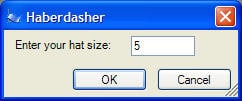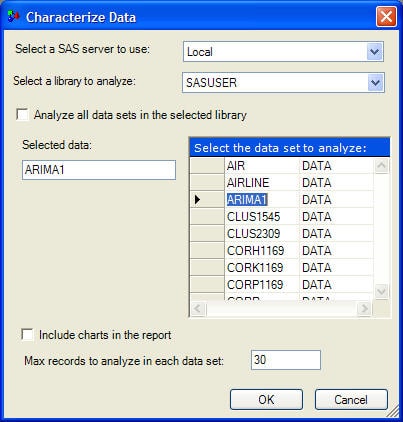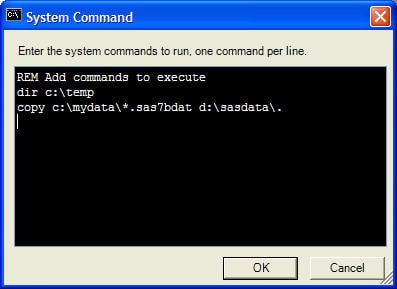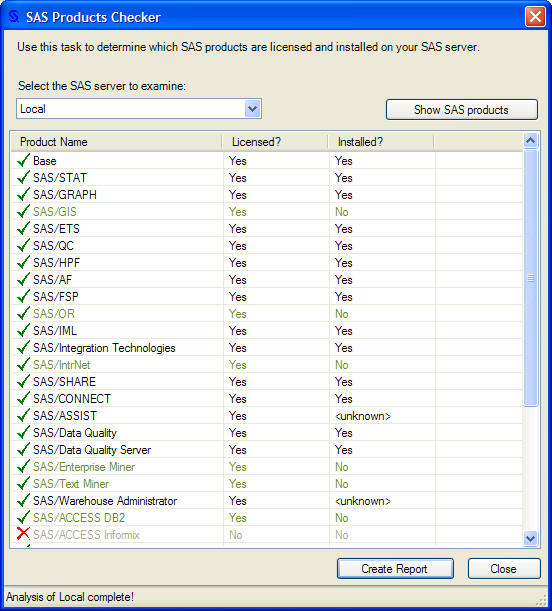Creating Custom Add-In Tasks for SAS Enterprise Guide 3.0
Links of interest:
- Reference documentation for 3.0 add-ins (ZIP file, 410KB)
- Example projects for 3.0 add-ins (.zip file, 250KB, updated 30Mar2005)
- Visual Studio .NET 2003 template files for creating add-in tasks (.zip file, 22KB, updated 30Mar2005)
- Custom Tasks for SAS Enterprise Guide 2.0
SAS Enterprise Guide is a great application that provides you with easy access to powerful SAS analytics and data. Now you can extend SAS Enterprise Guide to take advantage of its connectivity and services, and use it to create a custom solution that fits the needs of your organization or industry. One way to extend SAS Enterprise Guide is by creating an add-in. An add-in allows you to add custom functionality that goes beyond what is delivered in the core product. Here are some examples where this can be useful:
- Providing friendly user interfaces for your existing SAS processes, where you have a library of SAS programs that you want non-programmers to be able to use.
- Connecting your SAS processes to non-SAS resources. You can use an add-in as a link to other information sources, such as web services, and bring that information into your SAS Enterprise Guide project and SAS session.
- Creating front-ends for SAS procedures and processes that are not addressed in the product out-of-the-box, so you can gain access now to the analytics and reports you need to use.
Another key advantage of creating custom add-ins -- you can use these same add-ins within the SAS Add-In for Microsoft Office.
This documentation describes how to create add-ins for SAS Enterprise Guide 3.0 and the SAS Add-in for Microsoft Office. SAS Enterprise Guide has been extendable using add-ins since release 2.0. Although previous add-ins used a different technology, add-ins that you created for SAS Enterprise Guide 2.0 will work in SAS Enterprise Guide 3.0. The following table illustrates what works with each version:
| Add-ins for SAS Enterprise Guide 2.0 | Add-ins for SAS Enterprise Guide 3.0 | |
| Implemented using COM (Visual Basic 6.0 or Microsoft .NET via interop) |
|
|
| Implemented using native Microsoft .NET (C#, Visual Basic .NET, others) |
|
|
| Work in SAS Enterprise Guide 2.0 |
|
|
| Work in SAS Enterprise Guide 3.0 |
|
|
| Work in SAS Add-In for Microsoft Office |
|
Note: Using SAS Controls Supplied with SAS Enterprise Guide 2.0
If you have an existing COM-based custom task that makes use of the user-interface controls that shipped with SAS Enterprise Guide 2.0, you will need to install those controls to use your task on a system that does not have SAS Enterprise Guide 2.0 installed. The controls are supplied in this zip archive file:
You can extract the controls (all ActiveX controls with a .OCX file extension) and copy them to a new folder that you create on the target machine. Then you must register the controls with Windows so that they are available for use by your custom tasks. The zip archive contains a sample batch file that will register the control files using regsvr32.exe.
Examples
All examples supplied were created using Microsoft Visual Studio .NET 2003. They are implemented using the C# language except where noted.
Note: All examples are provided for illustration purposes only, and are not necessarily production-quality add-ins that are supported by SAS.
Classic Hat (C# and Visual Basic .NET)
Description: Simple example of an add-in that creates the cowboy hat graph.
Features:
- Simple, uncluttered example of the essential parts of an add-in that generates a small SAS program
Data Set Contents (C#)
Description: Creates a PROC CONTENTS report for the selected input data.
Features:
- A simple user interface with controls that map to PROC CONTENTS options.
- Uses active data from the project as input
Characterize Data (C#)
Description: Creates a report on data or a library that you select, detailing the contents and characteristics of the data columns within the selected members.
Features:
- Presents a user interface to allow you to select server, library, and data set
- Uses application services to enumerate list of servers and libraries
- Uses SAS IOM OLEDB Provider to enumerate datasets within a .NET datagrid
- Reads a segment of "pre-canned" SAS code from a .NET assembly to generate SAS program
Life Expectancy (C#)
Description: Uses a 3rd party web service to create a life expectancy table, and adds that data to the project.
Features:
- Gathers data records from an internet site using .NET to access a web service
- Builds a DATA step with a CARDS statement to create the data in SAS
System Command (C#)
Description: Allows you to supply a series of Windows system commands to run within your project.
Features:
- Presents a task that runs Windows system commands instead of creating a SAS program
- Creates a custom log to store in the project, representing the results of the system commands.
SAS Catalog Explorer (C#)
Description: Launches a mini-application that allows you to view the contents of SAS catalogs on any server you select. You can even view the contents of certain types of entries, and delete entries.
Features:
- Uses application services to enumerate list of servers and libraries
- Uses the SAS IOM OLEDB Provider to read information about available catalogs and entries.
- Uses the SAS FileService interface to read the contents of a catalog entry
- Uses the SAS Enhanced Editor control within a simple .NET form to view the contents of a catalog entry
- Uses the application services to submit code from within the add-in (to delete catalog entries using PROC CATALOG)
- Illustrates a number of .NET controls, including toolbar, tree view, list view, and splitter window
SAS Products Checker (C# and Visual Basic .NET)
Description: Analyzes the SAS server to determine which SAS products are licensed and installed.
Features:
- Uses application services to enumerate list of servers.
- Uses application services to submit a SAS program
- Uses the SAS IOM OLEDB Provider to interpret results from the SAS program
- Optionally creates an ODS report of the installed products
- Also works with the SAS Add-In for Microsoft Office
Compare Columns (Visual Basic .NET)
Description: Compares two columns in a data set using PROC COMPARE.
Features:
- Uses application services to retrieve column information about the input data
- Uses the SAS Variable Selector control (just like the tasks that ship with EG and SAS Add-In for Microsoft Office)
- Also works in SAS Add-In for Microsoft Office.







